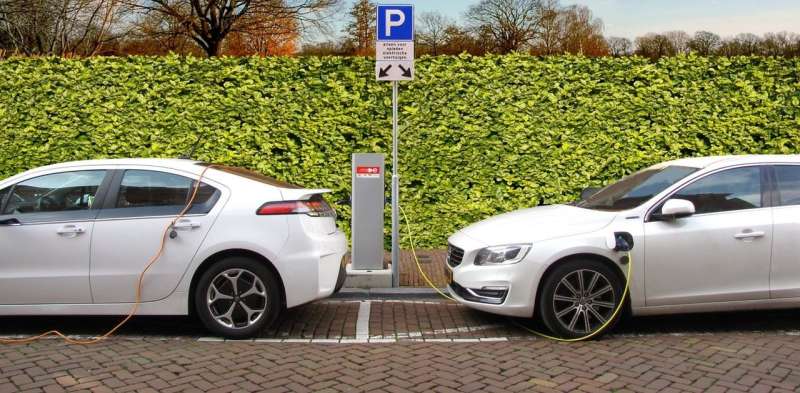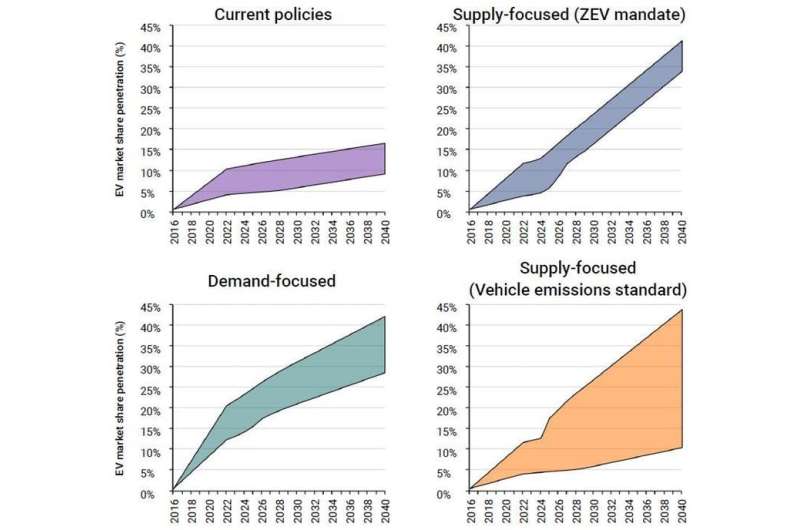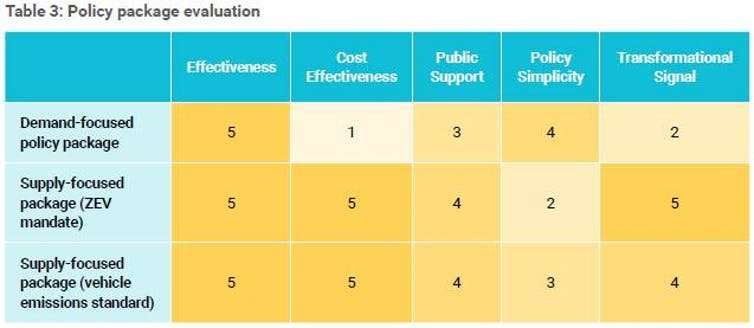How to get more electric vehicles on the road

Despite the hype and excitement, not to mention the fanciful visions put forth by Tesla's Elon Musk, electric vehicles (EVs) are not yet winning over the transportation sector.
Aside from a few outliers, one to two per cent of the vehicles sold in most developed nations, including the United States, the United Kingdom, Germany and France, are electric vehicles. Canada is a clear laggard, with market share well below one per cent.
This is nowhere near the goal set by the Clean Energy Ministerial for electric vehicles to make up 30 per cent of the vehicles sold by 2030, which seems to be the minimum trajectory to achieve the long-term mitigation goals for greenhouse gases.
Despite these unimpressive sales, enthusiasts argue that the electric future is inevitable, driven by ever-cheaper batteries and consumer interest. But we've seen such predictions of unbridled optimism before for several alternative fuel visions —all followed by periods of unmet expectations and disappointment.
Perhaps recognizing its lack of progress to date, the Canadian government plans to announce a Zero Emissions Vehicle (ZEV) Strategy in early 2018.
To help inform this strategy and the Canadian public, my research team at Simon Fraser University, supported by the Metcalf Foundation, has this month released Canada's ZEV Policy Handbook. This report builds off of our 2016 EV Policy Report, which found that no part of Canada was on its way to meet long-term EV sales goals. Our new handbook provides a toolbox to get us on track.
The future of EVs: Why we need public policy
My team's published research shows that some of the biggest barriers to EV sales are a lack of supply, limited availability and variety of EV makes and models, and limitations in charging infrastructure. The only thing that can overcome these barriers is public policy.
All of the improvements in cars and trucks over the last century, be they safety, environmental or otherwise, can be linked directly to policy. Seat belts, air bags, unleaded gasoline, fuel economy improvements —all came about through strong policy support.
The same is true for EVs.
For example, much of the initial and ongoing development of hybrid, plug-in hybrid and battery electric vehicle technology can be linked to one particular policy: California's ZEV mandate
First introduced in 1990, the ZEV mandate requires automakers to develop and sell EVs (or hydrogen fuel-cell vehicles) in California. Automakers that do not sell enough EVs relative to their other vehicle sales can either buy credits from those that over-comply (e.g. Tesla) or pay a stiff financial penalty.
Over the years, the ZEV mandate has driven innovation, including patents on EV technology. It has also provided a uniquely supportive environment for a new automaker, Tesla, to develop and flourish. Indeed, when Tesla earns profits in a given quarter, it is only due to the credits it earns and sells through the ZEV mandate, bringing in up to US$139 million per quarter.

Lessons from world leaders
Only a few regions globally are breaking through the two per cent barrier for EV sales. In each case, policy can be viewed as the main driver.
The clear champion to date is Norway —no other country comes close.
In 2017, about one in every three new vehicles sold in Norway is an EV. The explanation is no secret: Norway offers huge incentives.
Specifically, the country has removed the high taxes typically applied to the purchase of a new car in that country, effectively lowering the purchase price of an EV to about equal that of a conventional vehicle.
California is a different sort of EV champion. For decades, the California Air Resources Board (CARB) has sought to support and direct innovation to help the state to achieve its environmental goals. In recent years, CARB has solidified a vision of deep greenhouse-gas mitigation for each sector.
Its approach to passenger vehicles includes a number of complimentary policies —financial subsidies, high-occupancy vehicle (HOV) lane access and deployment of charging infrastructure. But what stands out is the ZEV mandate.
This policy is unique in that it puts the onus on automakers to leverage their marketing skills and innovation to build the EV market, and to develop the makes and models that consumers want. In addition to California and the nine other ZEV states, Québec has recently developed a ZEV mandate, along with China.
These two leading regions provide two different strategies for EV success. Norway's strategy is largely "demand-focused," using exceptionally large incentives and tax breaks to make EVs more appealing to consumers. California's strategy, on the other hand, focuses more on the supply side, applying a regulation to automakers to channel innovation and marketing strategy.
In our new ZEV Policy Handbook, we find that both demand-focused and supply-focused policy packages can work in Canada.
The problem is that current policies in Canada, and most countries globally, are too weak: Short in duration and lacking in "teeth."
Many regions offer EV purchase subsidies, but these are too small and temporary to make a noticeable difference in EV sales in the long term. Ontario's purchase incentive is notably large, offering $3,000 to $14,000 for an EV. But because it's not clear if such a policy will be in place for more than a year or two, automakers and other stakeholders don't get a clear signal if EVs really are the future.

Comparing subsidies and regulations
While both approaches can be successful, they have different strengths and weaknesses. Our handbook compares each policy package across five criteria: Effectiveness, cost-effectiveness for government, political acceptability, complexity and strength of "signal" for transition.
Offering strong, Norway-like subsidies can indeed push EV sales, and subsidies in general are found to be publicly acceptable. However, to have a lasting impact our modelling indicates that such incentives will need to be large in value and offered for a long duration, likely a decade or even longer.
Such a plan would be costly for government, which could lead to public backlash in the long run, not to mention limiting public funds that could be used for other societal benefits such as education or health care.
The ZEV-mandate approach has the advantage of being clear and direct. Automakers are given a sales target, with firm penalties for non-compliance, in effect harnessing and guiding the powers of innovation and product development at the source.
Most immediately, research shows that regions with a ZEV mandate have significantly increased EV availability and EV sales.
In the longer term, such a policy can send a strong, durable signal to the many relevant stakeholders that the transition to electric mobility is under way, producing confidence to develop and build supporting infrastructure and services.
The main drawback is the political resistance by automakers, who understandably bristle at the thought of added regulation. For this reason, some policymakers see a ZEV mandate as politically uncomfortable, especially in regions where automakers have strong political clout, such as Canada, the United States and Germany.
Due to such potential opposition, our handbook also considers a third pathway to success: Dramatic tightening of our vehicle emissions standards, to about 40 per cent of the current fleet average by 2040. Such a policy could also send a signal about a transition to EVs, without requiring extensive government expenditure.
Either way, go big
There is an easy answer for what can make EVs thrive: Strong policy.
However, there is no easy answer for which strategy is best for a given region. Norway and California provide excellent examples of leadership —though each has its own unique cultural and political contexts. Any region, national or subnational, that is serious about supporting EVs will need to consider the trade-offs for themselves.
But it's clear that the only way to be successful is to go big: Either implementing large subsidies for a long time, or enacting strong, durable regulation with "teeth."
Provided by The Conversation
This article was originally published on The Conversation. Read the original article.![]()



















